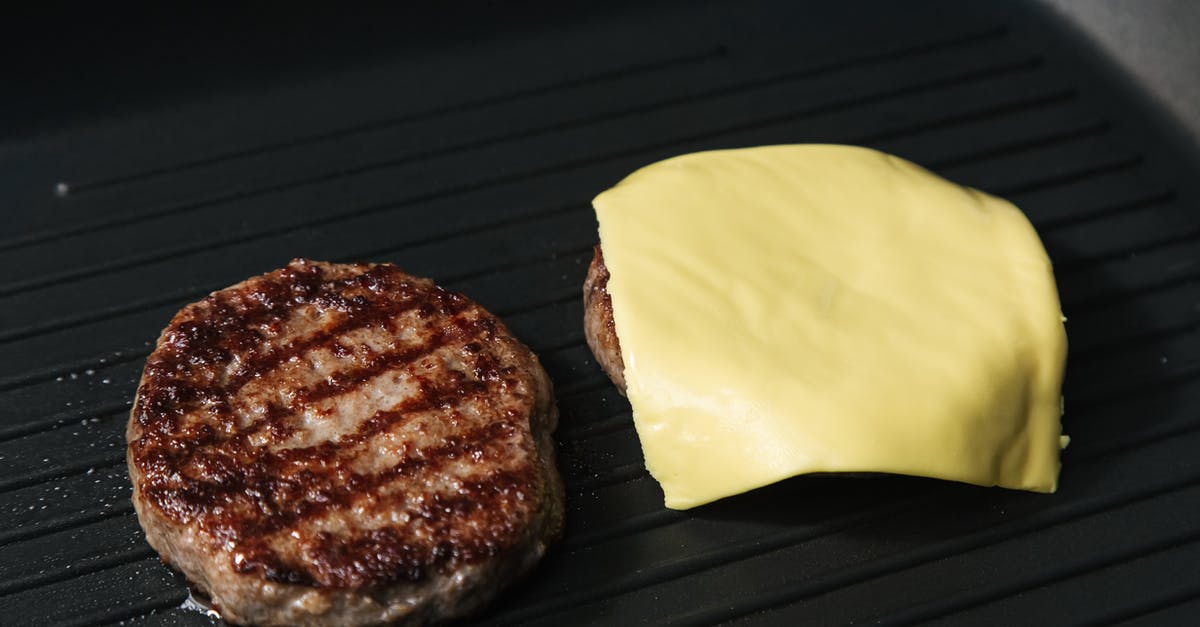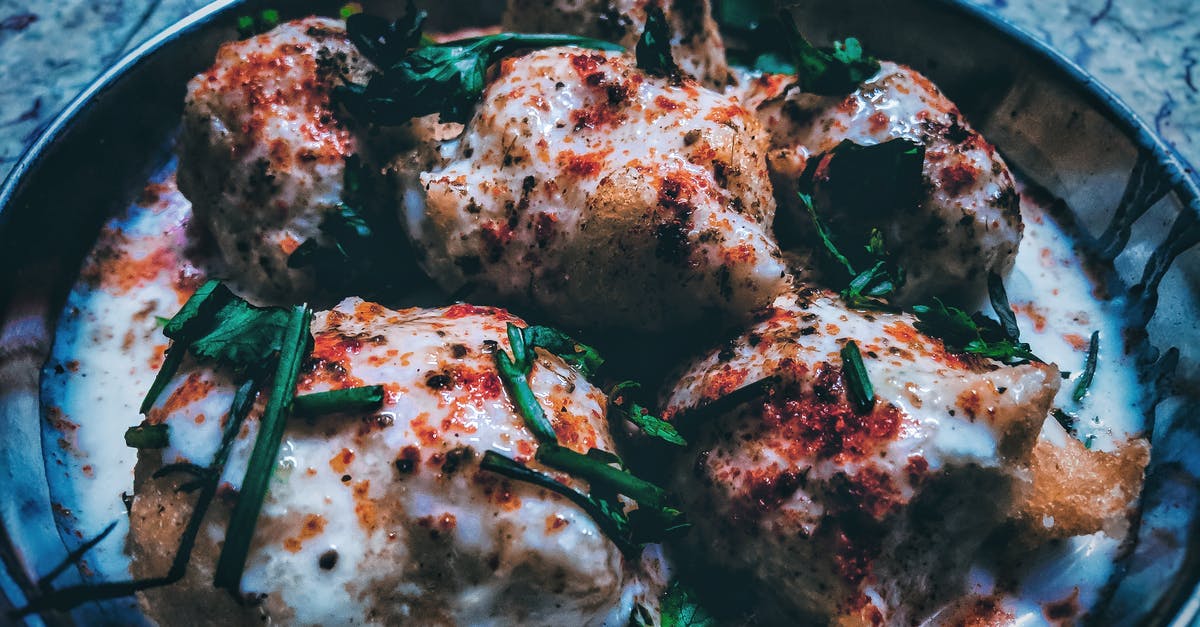Pan stain after roasting cheese

A couple of weeks ago I bought this "grill and pan cheese" in a supermarket and I distinctly remember to have chosen this one because it didn't contain any weird chemicals... It seemed to me "only cheese" and nothing else.
It came in a parallelepiped form (just like feta would... and looked just like that) and both grilled and pan-roasted, its consistency was a bit chewy (to the point that I would hear squeaking every time that I put a piece in my mouth).
I'm explaining this whole thing to help you better understand what I am talking about, so you can maybe have a better opinion on the fact.
When I roasted the squeaky thing in the pan to the point that it was brown on both sides, I noticed that my pan was stained. After the meal I rinsed it (when it was cool), and put it in the dishwasher. After having it washed, the rectangular brownish stain remained (and I could also not remove it washing the pan by hand). Notice that the pan is a ceramic "non-stick" one.
What do you think caused the stain? How can I clean the pan?
EDIT:
Just a follow up... After all this time my pan never failed me. Nothing else sticked to it or caused nasty stains. The one of the cheese remained though.
Best Answer
The most likely explanation is that your pan starts failing. When ceramic pans fail, they do so by getting gummed up with food buildup.
I am a bit surprised to see it first occur with cheese, but maybe you dipped it in batter before frying? Also, the herbs on it could have been mixed with starch before being applied to the cheese, this is done to prevent caking and mold. Typically, the worst combination for these pans is starch with fat. On the other hand, I have no proof that it can't happen with cheese, it's just that I haven't heard of it being the first food to start sticking.
Once this happens, you can't really clean it. A lye solution will restore it for a short time, but I don't know the physics of the pan failure, so I have no idea if it is beneficial, or on the contrary, if it speeds up the degradation process.
Just continue using the pan, and once it becomes too non-nonstick, decide if you want to keep it that way and fry with it as with a standard pan (it behaves much like a stainless steel pan afterwards) or throw it out. For me, it depends on the pan heating quality, if it is a good pan with thick bottom and even heating, it continues doing a good job after the coating fails.
Pictures about "Pan stain after roasting cheese"



Quick Answer about "Pan stain after roasting cheese"
Sprinkle a scorched pan with baking soda and pour hydrogen peroxide ($0.95, Target) over it, followed by another layer of baking soda. Let the mixture sit on the pan for up to two hours. Wipe the mixture off with a sponge. If needed, repeat the process for tough stains.How do you clean a non stick roasting pan?
To do this:How do you get stains out of pans?
Pour a small layer of equal parts water and white vinegar on the bottom of the pan. Heat the diluted vinegar on the stovetop and allow it to come to a boil. After it boils for a minute, remove it from the heat and drain the vinegar down the sink.How do you clean a stainless steel roasting pan?
Add a hearty pour of baking soda (about \xbc cup or \xbd cup), and then carefully place your pan in the water. Reduce the water to a gentle boil, and let the pan cook for about 15 to 30 minutes, flipping or rotating it if necessary, so that all the sides are boiled. You should start to see brown residue flaking off.How do you deep clean pans?
Baking soda, distilled white vinegar and fresh lemon juice are a triple cleansing threat. Add a dash of baking soda or vinegar during the boil method to help clean scorched saucepans. Soak pots, baking dishes or cookie sheets in hot to boiling water with baking soda and fresh lemon juice for an accelerated clean.DIY How to Clean Burnt Pan Easily-Useful Kitchen Tip-Easiest Way to Clean a Burnt Pan or Pot
More answers regarding pan stain after roasting cheese
Answer 2
Generally when cleaning pieces of kitchenware I like to provide extra care for (such as non-stick pans), and when cleaning those horrible stains that tend to get on baking pans of glass and ceramic, I have good experience with leaving it in hot water for a couple of minutes and using the soft part of a sponge. If the stain proves particularly resistant and I want to give up all hope I leave it in the hot water for a bit longer, try with the soft part again, and if there is no luck with that I either abandon the project or use the more ragged side of the sponge.
Other than that I think rumtschos answer on what might cause it and why you might not want to go to hard at cleaning it is very good =)
Sources: Stack Exchange - This article follows the attribution requirements of Stack Exchange and is licensed under CC BY-SA 3.0.
Images: Ron Lach, Edward Eyer, cottonbro, Kartik Kacha
